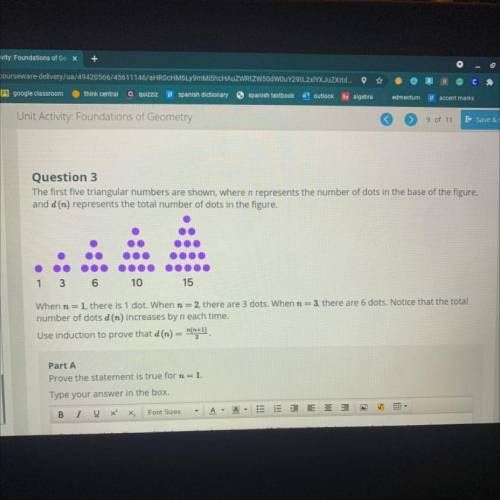
Mathematics, 27.08.2021 18:40, tassion3
The first five triangular numbers are shown, where n represents the number of dots in the base of the figure,
and d(n) represents the total number of dots in the figure.
When n = 1, there is 1 dot. When n = 2, there are 3 dots. When n = 3, there are 6 dots. Notice that the total
number of dots d(n) increases by n each time.
Use induction to prove that
d (n) = n(n+1)/2
Prove the statement is true for n = 1.


Answers: 1
Other questions on the subject: Mathematics


Mathematics, 22.06.2019 05:30, afropenguin2853
On every three hamburgers that mcdonald’s make they use 9 pickles how many pickles would they use on 99 burgers
Answers: 1

Do you know the correct answer?
The first five triangular numbers are shown, where n represents the number of dots in the base of th...
Questions in other subjects:

English, 27.04.2021 06:10

Mathematics, 27.04.2021 06:10





English, 27.04.2021 06:10









